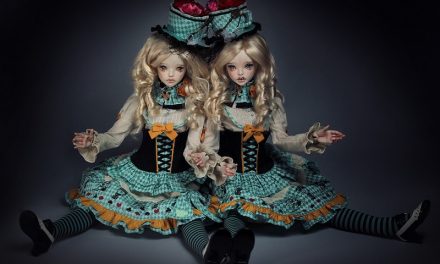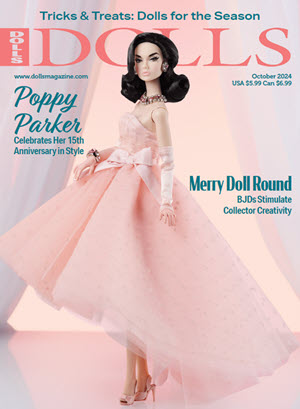By A. Glenn Mandeville
Jenny Graves embarked on a life-changing journey in 1922 when she joined a small number of other creative women in opening the Vogue Doll Shoppe. Born Jenny Adler in 1890, she was accustomed to designing outfits both for family members and their dolls. She’d already faced more than one challenge in her life — her father died when she was 15, and she put her dreams on hold to help support her family. She married William H. Graves in 1913 and gave birth to three children.
The Vogue Doll Shoppe became a highly successful venture, enabling Graves to open two plants: one in Medford and the other in Malden, Massachusetts, in 1951. Around 1930 the name of her business was changed to Vogue Dolls. After her husband passed away in 1939, Jenny found herself the sole support for her entire household — in the middle of the Great Depression.
One of Jenny Graves’ children, Virginia Graves Carlson, grew up to be a brilliant designer in her own right. The two women introduced several new doll designs, including an 8-inch composition toddler doll sculpted by the famed Bernard Lipford. After many experimental versions, the two women named the doll Ginny, using Virginia’s nickname. Launched as an all-hard-plastic doll in the late 1940s, Ginny became wildly successful and the best-known design to come from Vogue Dolls.
Graves and Carlson made a very important decision at the outset, which was to make the Ginny doll available to any outlet that would like to carry it. This decision meant that the Ginny doll had high visibility and a lower price point than dolls from some of its major competitors.
Ginny became an icon to the generation of children who grew up in the 1950s and early 1960s. With a wardrobe of literally hundreds of outfits and staggering accessories such as furniture and gift sets, as well as miniature luggage sets and even a pet dog, this was a doll that gave children confidence to do things that might be scary in real life.
But baby boomer children were growing up quickly, and by the late 1950s, many of those children were more interested in their future life as a teenager. It’s very difficult to say which company was the first to introduce the miniature high-heel full-figured fashion doll, but in 1957 Vogue Dolls launched their fashion doll Jill, a stunning 10.5-inch hard plastic doll with a glued-on ponytail wig and sleep eyes. Introduced as Ginny’s big sister, Jill wasn’t just another pretty fashion doll. She had more fashions and accessories than most high-heel fashion dolls introduced that year.
Soon she was joined by big brother Jeff and a friend, Jan, who of course was the same size as Jill and could wear all of Jill’s stunning fashions. With amazing gift sets, matching fashions, and even coordinating ensembles for the entire family, Jill quickly became a very popular doll.
In addition to a huge selection of outfits and accessories, Vogue Dolls released a selection of furniture for Jill and her friend Jan, including a bed, wardrobe, and vanity with bench.
Jill captured the teenage doll market but couldn’t hold on to it. Unfortunately, Jenny Graves was one of several high-profile dollmakers who didn’t believe in the value of television advertising. Meanwhile, Mattel took a gamble with their finances by using TV ads to present their dolls directly to children rather than marketing to parents. As the exciting new medium of television swept across America, Mattel’s Barbie doll eventually overtook all her competitors in popularity.
Decades later, looking back at older Vogue catalogs and the astonishing work and creativity that went into all Vogue dolls, Jill will definitely be remembered as an early winner in the amazing fashion-doll race of the late 1950s.
















